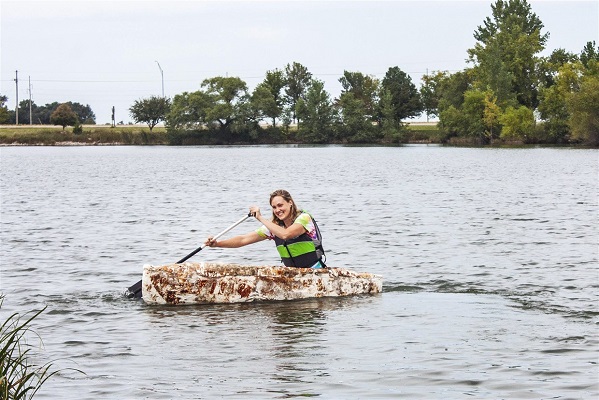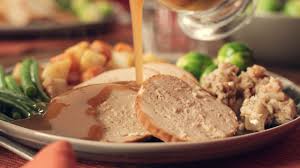Canoe made from mushrooms
Forums:
mycelium actually. Pretty cool. We eat the stuff around here. it's a fairly good turkey substitute.
(this article is from an NBC page that has lots of annoying ad crap)
[At first glance, her 8-foot vessel looks much like any other canoe — same oblong shape, same pointed ends, same ability to float on water.
But upon closer inspection, it’s clearly anything but ordinary: Ayers’ canoe is made out of mushrooms.
More specifically, her boat is made from mycelium, the dense, fibrous roots of the mushroom that typically live beneath the soil. Ayers, 28, a student at Central Community College in Columbus, Nebraska, even gave her creation a fitting name: “Myconoe.”
Though Ayers has taken the canoe out for several quasi-recreational excursions — and plans to do so again as soon as the weather warms up in the rural part of Nebraska where she lives — her real goal with the eye-catching project is to raise broader awareness about mushrooms...Ayers was sold on the power of mushrooms instantly. Having learned that mycelium is buoyant and waterproof, she decided to try using it to create a boat..]
https://www.nbcnews.com/news/us-news/fungus-answer-climate-change-studen...




- Log in to post comments

Top of Page Bottom of Page PermalinkFull Name: Alan R
Quorn is a meat substitute
Quorn is a meat substitute product originating in the UK and sold primarily in Europe, but is available in 18 countries. Quorn is sold as both a cooking ingredient and as the meat substitute used in a range of prepackaged meals.
Quorn, originally described as mushroom protein is now more accurately labelled as 'mycoprotein' and is derived from a fungus or mould called ' Fusarium venenatum'....In most Quorn products, the fungus culture is dried and mixed with egg albumen, which acts as a binder, and then is adjusted in texture and pressed into various forms.
“Myco” refers to things related to fungi but mycoprotein is not from mushrooms. Rather, it's produced by a thread-like fungus that's found in the soil.
Top of Page Bottom of Page PermalinkFull Name: Alan R
Quorn is a meat substitute
They first built a wooden skeleton and a hammock-like structure to suspend the boat-shaped form in the air.
They next sandwiched the boat’s skeleton with mushroom spawn and let nature take over.
Top of Page Bottom of Page PermalinkFull Name: Def. High
Cubensis Canoe. anyone?
Cubensis Canoe. anyone?
Top of Page Bottom of Page PermalinkFull Name: doctor
I see she's wearing a tie-dye
I see she's wearing a tie-dye
Top of Page Bottom of Page PermalinkFull Name: Dr. Benway
Quorn, originally described
that sounds revolting. ive seen plants with, and battled against, fusarium wilt in cannabis plants - its rare and hard to diagnose in cannabis but devastating. of course fusarium wilt is a different species of fusarium, and quorn/f venenatum does not have any of the horrible effects ive typed out below, but it still gives me the heebie-jeebies.
https://en.wikipedia.org/wiki/Fusarium_wilt
f oxysporum has also been modified and turned into a biological weapon by the US government -
https://en.wikipedia.org/wiki/Fusarium
idk even know what to say about this one
https://en.wikipedia.org/wiki/Fusarium_oxysporum
WTF what a fascinating fungus
Top of Page Bottom of Page PermalinkFull Name: Philzone Refugee
Trippiecanoe and Boomers Too
Trippiecanoe and Boomers Too
Top of Page Bottom of Page PermalinkFull Name: Def. High
Lol.
Lol.
Top of Page Bottom of Page PermalinkFull Name: Thumbkinetic
Goldshit-ter (wah wah waah
Gold . . . shit-ter (wah wah waah wah)
If Trump could eat gold and have it coat him afterward, he definitely would.
Then he'd look like his bathroom.
'Shrooms are cool.
Top of Page Bottom of Page PermalinkFull Name: Philzone Refugee
He's more King Feces than
He's more King Feces than King Midas. Everything he touches turns to shit.
Top of Page Bottom of Page PermalinkFull Name: Def. High
I used to be a king
I used to be a king
And everything around me turned to shit
It's 'cause I built my life on sand
And I ate fast food a little bit